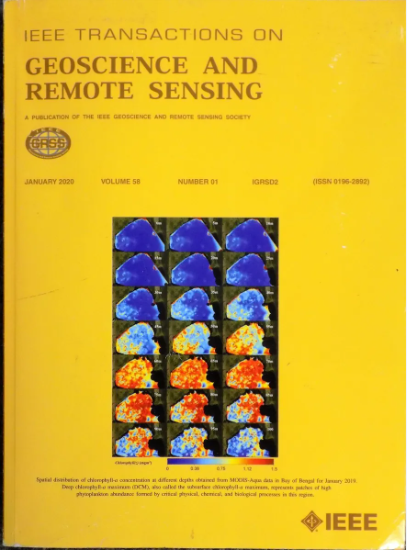基于 SIFT 的多向增强模型用于 GPR 地下管线识别
IF 7.5
1区 地球科学
Q1 ENGINEERING, ELECTRICAL & ELECTRONIC
IEEE Transactions on Geoscience and Remote Sensing
Pub Date : 2024-09-11
DOI:10.1109/TGRS.2024.3458452
引用次数: 0
摘要
地下管线识别是城市地区的一项重要工作。作为一种高效、非破坏性的识别方法,地面穿透雷达(GPR)已越来越多地应用于地下管线的识别。随着 GPR 数据量的不断增长,对自动识别的需求日益迫切。然而,由于地下环境的复杂性,现有的自动识别方法仍然存在准确率低、鲁棒性差、需要大量训练数据集等缺点。本文提出了一种结合尺度不变特征变换(SIFT)和支持向量机(SVM)的 GPR 地下管线识别模型。该模型基于双曲线顶端存在尺度不变关键点这一事实。首先,使用 SIFT 来识别图像中的比例不变关键点。对这些关键点进行对称性评估和特征增强。然后,使用 SVM 滤除位于双曲线顶端的关键点。最后,对位于同一双曲线上的关键点进行聚类,以获得识别结果。该模型通过修改高斯金字塔层中模糊系数的计算方法,改进了原始的 SIFT 方法。在构建特征描述符时,它还采用了人工设计的特征增强方法。此外,我们还引入了对称性判断等方法,以进一步提高模型的准确性。结果表明,即使训练样本非常有限,所提出的方法也能在现场数据中表现出卓越的识别性能。本文章由计算机程序翻译,如有差异,请以英文原文为准。
Multidirectional Enhancement Model Based on SIFT for GPR Underground Pipeline Recognition
The recognition of underground pipelines is an important in urban areas. As an efficient and non-destructive recognition method, ground penetrating radar (GPR) has been increasingly applied in the recognition of underground pipelines. With the growing volume of GPR data, there is an urgent need for automatic recognition. However, due to the complexity of the subsurface environment, existing automatic recognition methods still have drawbacks such as low accuracy, poor robustness, and the requirement for large training datasets. An underground pipeline recognition model for GPR that combines scale-invariant feature transform (SIFT) and support vector machine (SVM) is proposed in this article. The model is based on the fact that there are scale-invariant keypoints at the tops of hyperbolas. First, SIFT is used to identify scale-invariant keypoints in the image. These keypoints undergo symmetry assessment and feature enhancement. Subsequently, SVM is employed to filter out the keypoints located at the tops of the hyperbolas. Finally, keypoints located on the same hyperbola are clustered to obtain the recognition results. The model improves the original SIFT method by modifying the calculation of the blur coefficients in the Gaussian pyramid layers. It also employs manually designed feature enhancement methods when constructing the feature descriptors. Additionally, we have introduced methods such as symmetry judgment to further enhance the model’s accuracy. The results indicate that the proposed method exhibits superior recognition performance for the field data even with very limited training samples.
求助全文
通过发布文献求助,成功后即可免费获取论文全文。
去求助
来源期刊

IEEE Transactions on Geoscience and Remote Sensing
工程技术-地球化学与地球物理
CiteScore
11.50
自引率
28.00%
发文量
1912
审稿时长
4.0 months
期刊介绍:
IEEE Transactions on Geoscience and Remote Sensing (TGRS) is a monthly publication that focuses on the theory, concepts, and techniques of science and engineering as applied to sensing the land, oceans, atmosphere, and space; and the processing, interpretation, and dissemination of this information.
 求助内容:
求助内容: 应助结果提醒方式:
应助结果提醒方式:


